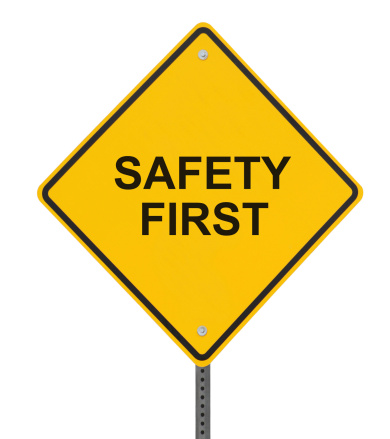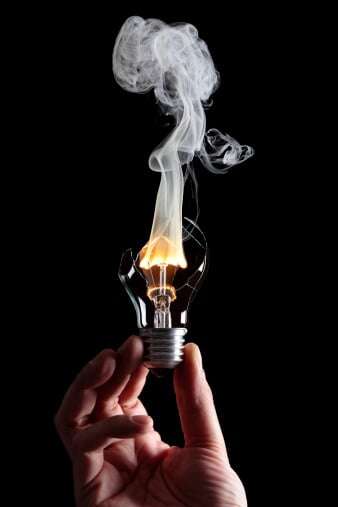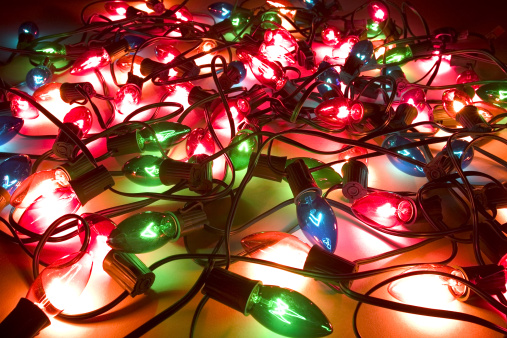 It’s been a busy year at Experts In Your Home, and it’s hard to believe that 2019 is just around the corner. We offer tips regularly to help you as a homeowner, knowing that these tips may come in handy when you read them or in the future.
It’s been a busy year at Experts In Your Home, and it’s hard to believe that 2019 is just around the corner. We offer tips regularly to help you as a homeowner, knowing that these tips may come in handy when you read them or in the future.
We’ve compiled a list of some of our most widely read blog posts throughout the past year, and we hope this helps you keep your home well maintained no matter the season. When it comes to home maintenance, Experts In Your Home knows we’re all better off when we pay attention and keep a close eye on things.
Here are some of our most widely read blog posts over the last year…
#1) Why Your Air Conditioning Thermostat Set at 78, Won't Cool Below 80
 "Is it hot in here or is it just me?" This thought may have crossed your mind enough lately that you have to do a double take when checking your thermostat. You've looked once, given it time, checked it again and there's no denying what you can plainly see with your own two eyes: your thermostat registers 80 degrees but you have it set at 78 degrees.
"Is it hot in here or is it just me?" This thought may have crossed your mind enough lately that you have to do a double take when checking your thermostat. You've looked once, given it time, checked it again and there's no denying what you can plainly see with your own two eyes: your thermostat registers 80 degrees but you have it set at 78 degrees.
Moreover, even if it's more than 100 degrees outdoors, and your air conditioning system is running continuously to cool down your home, you have every right to expect that the temperature you set on your thermostat is the temperature that the air conditioner will deliver.
Clearly, something is wrong. Pinpointing the reason is, like many issues with air conditioners, a process of elimination. So let's take it from the top and review probable causes that you can rectify and probable causes that only technicians from air conditioning services companies can solve on your behalf.
Check the filter
As we've said many times, that soft, meshy device provides some hard reinforcement to your air conditioner. In this case, if a filter is loaded with dust and dirt, it could be interfering with your air conditioner's ability to cool your home. Now might well be the time to pop in a fresh filter.
Check the thermostat's power source after ensuring that it's set to "cooling" mode
If your thermostat is hard-wired, check the fuse or circuit breaker; if it's battery-operated, replace the batteries. If these steps check out, the National Association of Certified Home Inspectors recommends testing the thermostat's integrity by taping a thermometer next to the thermostat and waiting 15 minutes. If the thermometer registers a different reading from that of the thermostat, it might need to re-calibrated.
#2) Quiz: Test Your Basic Heating and Air Conditioning System Knowledge
 There's nothing like owning or renting a home to teach you a few things -- whether you like it or not – about your heating and air conditioning system. And judging from what Experts In Your Home sees and hears from our customers, they are one smart group of people.
There's nothing like owning or renting a home to teach you a few things -- whether you like it or not – about your heating and air conditioning system. And judging from what Experts In Your Home sees and hears from our customers, they are one smart group of people.
So, just for fun, try testing your basic knowledge with our true/false and multiple choice quiz, with general questions and those specifically about furnaces, air conditioners and heat pumps. Rather than keep you hanging in suspense, we've supplied the answers at the end. Try not to peek and ruin all the fun!
1.) HVAC stands for heating, ventilation and air conditioning:
A: True
B: False
2.) An HVAC system accounts for approximately what percentage of most Americans' total annual energy bill?
A: 10 to 15 percent
B: 20 to 25 percent
C: 30 to 35 percent
D: 40 to 55 percent
3.) Relative humidity refers to:
A: The amount of moisture in the air
B. The amount of moisture in the air relative to the maximum amount possible before the air becomes saturated
4.) Insufficient moisture in a home can cause:
A: Dry, itchy skin
B: Clogged sinuses
C: Aggravated asthma and allergy symptoms
D: Increased risk of bacterial infection
E: All of the above
#3) Electrical Safety Tips: How to Put Out an Electrical Fire
 We preach electrical safety practices at Experts In Your Home and we know you practice them at home.
We preach electrical safety practices at Experts In Your Home and we know you practice them at home.
But accidents, as they say, happen. In fact, there are nearly 50,000 electrical fires each year in the United States, according to the National Fire Protection Association. It's safe to say that not one of these fires occurs intentionally. That's why they're called “accidents” and not “intentionals.” And that's also why you must know how to put out an electrical fire if one happens to break out in your home.
First, it helps to remain alert to conditions that may lead to an electrical fire. These warning signs include:
- Circuit breakers that repeatedly trip
- Shocks or tingling feelings as you touch an electrical appliance
- Flickering lights
- Discolored electrical wall outlets
- A burning smell or smoke coming from wiring, a plug or an appliance
Take preemptive action with an appliance by unplugging it immediately and cutting the power at the electrical panel. Then call Experts In Your Home so that we can inspect and repair the situation promptly.
#4) DIY Electrical Repairs: How to Handle an Overloaded Circuit
It's happened to most of us at some point: we plug in or turn on a new device--a vacuum cleaner, laptop, lamp or blow dryer—and all the electrical power in the room goes blank.
 It can be jarring all right, and it means that the over-current protective device at your home's main electrical panel sensed trouble, tripped open the circuit breaker and shut off the power. (In much older homes, a fuse will “blow"). This three-step process prevents the wires inside the panel from getting too hot and potentially starting a fire.
It can be jarring all right, and it means that the over-current protective device at your home's main electrical panel sensed trouble, tripped open the circuit breaker and shut off the power. (In much older homes, a fuse will “blow"). This three-step process prevents the wires inside the panel from getting too hot and potentially starting a fire.
At this point, you have an overloaded circuit on your hands. Technically, this means that the total electrical load has exceeded 1,800 watts for an 15-amp circuit, which most homes are. (The load limit for a 20-amp circuit is 2,400 watts).
The short-term solution is to simply plug the device into another outlet—preferably a general purpose circuit—and flip the circuit breaker back on. But if a circuit trips repeatedly and/or often, a better, longer-term solution is to add up the electrical load so that you can spread it to an “underloaded” circuit or hire a licensed electrician to run a new circuit.
Handling an overloaded circuit is such an important topic that Experts In Your Home is proud to make it part of our ongoing series of articles on do-it-yourself electrical repairs. You might find it to be the most useful and practical article yet—and not nearly as intimidating as it may sound.
#5) Home Cleaning: How to Clean Your Driveway, Sidewalk & Patio
Experts in Your Home has spent enough time around homeowners, weekend warriors and do-it-yourselfers to know: it's often not a home cleaning task, per se, that they wish to avoid.
 They may not exactly relish the thought of getting down and dirty; this is true. But it is the perceived outcome that they dread even more. And because they perceive failure, they avoid the task. They procrastinate and find every reason and excuse to avoid it.
They may not exactly relish the thought of getting down and dirty; this is true. But it is the perceived outcome that they dread even more. And because they perceive failure, they avoid the task. They procrastinate and find every reason and excuse to avoid it.
We're all human, so if the Experts have tapped into your own human psychology with regard to concrete stains, you can now rest assured: Most stains can be removed – or at least mostly removed. As with many other home cleaning tasks, Experts in Your Home recommends starting with a simple method before gradually moving to more aggressive methods to clean and remove stains from concrete sidewalks, patios and driveways.
How to Clean Your Driveway, Sidewalk & Patio
Always Test a Treatment First
Concrete looks tough and resilient, and compared with a soft surface like carpet, it is. But just because it does not contain fuzzy fibers does not mean that concrete is impervious to cleaning treatments, either.
So treat concrete with care – just like you would a carpet – and test any chemical cleaning treatment in an inconspicuous place first. Let it dry, see how it looks and if you like what you see, proceed with the rest of the area. Expedite your home cleaning job by cleaning concrete when weather conditions are most conducive to doing so – or when it's warm, dry and sunny so that it can dry quickly and thoroughly.
#6) Could Your Heating and Air Conditioning Thermostat Be Poorly Placed?
If you've said it once, you've probably said it a dozen times about your home: “It was like that when we bought it.” Such are the decisions that we inherit from previous owners and especially the builder of our home. While some decisions are irreversible, some quizzical and even unwise decisions can be easily altered, including a poorly placed thermostat that inihibits your heating and air conditioning system from doing its job.

How do you know if you should relocate your thermostat? This is one of those questions that requires a bit of a round-about answer.
First, size up two big clues: Is your internal thermostat so out of sync with the reading on your thermostat that you're constantly jumping up to make an adjustment? Or do you notice your air conditioner or furnace turning on when it really doesn't need to?
From clues, we turn to recommendations from the U.S. Department of Energy. It says that thermostats should be installed “away from heating or cooling vents and other sources of heat or drafts (doorways, windows, skylights, direct sunlight or bright lamps).”
Let's isolate some definite poor choices and explain what conditions render them so:
Location: Near the kitchen
Why it's a poor spot for a thermostat: Between the stove, oven, indoor grill and any other appliance you fire up on a regular basis, your kitchen – and the area around it – is probably the warmest region in your home. Installing a thermostat anywhere near the kitchen is almost a guarantee that it will read the temperature in your home far warmer than it really is. And this means you probably won't feel comfortable at any time of the year.
#7) Why is My Light Buzzing & Does it Require an Electrical Repair?
We can trace the path of electricity from faraway transformers to the lamp that sits on a family room table. It sometimes seems as though a little bit of magic is involved in the journey, too.
 We obviously rely on electricity every day, and it usually responds when we flip a switch or plug in a device. But still: it is not a perfect commodity. Sometimes it requires a little magic – and human intervention – to work flawlessly.
We obviously rely on electricity every day, and it usually responds when we flip a switch or plug in a device. But still: it is not a perfect commodity. Sometimes it requires a little magic – and human intervention – to work flawlessly.
You may know exactly what we mean if your dimmer switch or fluorescent light is buzzing and it's driving you to the brink of distraction. Once you know why your light is buzzing, you can take the proper steps to remedy the problem – and execute a quick electrical repair with a magical touch.
#8) Home Remodeling: When You Need a Permit & When You Don't
 Some homeowners who undertake their first home remodeling project register the news better than others: Before work can begin, Experts in Your Home must secure a building permit on their behalf.
Some homeowners who undertake their first home remodeling project register the news better than others: Before work can begin, Experts in Your Home must secure a building permit on their behalf.
After months of planning, these homeowners are understandably eager for work to begin and view the permit process as an unnecessary delay – and sometimes even a form of governmental intrusion.
We have capably navigated the permit process hundreds of times in many different communities. So let us explain why a building permit is necessary, as well as when you might need one and when you might not. Once you're informed and know what to expect, you're bound to face your home remodeling project with greater confidence.
#9) We Know the Importance of Quality House Painting
House painting is one of the most important home maintenance projects you can do. House painting upkeep and caulking helps protect your home from weather damage caused by water and sun. Neglecting obviously peeling exterior paint can lead to high siding replacement costs. The condition of the exterior paint also helps determine a home's value. If the exterior painting of your home reflects a high level of care, a person looking to buy a home will be more confident that other areas of your home have been given the same kind of careful attention.
 There are many things to consider and many decisions that need to be made when house painting. The home painters at Experts In Your Home have provided exterior painting service for hundreds of homes and help clients make the big decisions about exterior paint color. Our Experts help clients select exterior paint color by teaching them about different color combinations, how colors reflect styles and how to make a house look distinctive and fit in its surroundings.
There are many things to consider and many decisions that need to be made when house painting. The home painters at Experts In Your Home have provided exterior painting service for hundreds of homes and help clients make the big decisions about exterior paint color. Our Experts help clients select exterior paint color by teaching them about different color combinations, how colors reflect styles and how to make a house look distinctive and fit in its surroundings.
#10) Why is There a Puddle Near My Outdoor Air Conditioning Unit?
You've probably noticed how it's usually easy for someone else to say “Don't panic” when it is you who is going through a home emergency. Still, if you notice a puddle near your outdoor air conditioning unit, the steadying advice is actually spot-on.
Yes, there might be a problem with your air conditioner that will require a repair. But try to look at the situation this way: one, at least you noticed the puddle before it grew to the size of a pond and two, our Experts have confronted this scenario hundreds of times before and know exactly how to troubleshoot the problem.
Water buildup stems from moisture
When you think about the very nature of air conditioning, and how it works, discovering water near your outdoor unit is hardly surprising – hence the “don't panic” advice. In fact, it's very much like the puddle of water you might spot on your driveway, underneath your car, after you've run the air conditioner and turned off the engine.
It might help to back up to square one and remember that your central air conditioning system functions by removing heat, and not just pumping cool air, to make your home cooler. The cooling process begins when your outdoor compressor pumps refrigerant through your system to gather moisture and heat from inside your home.
 This combination of moisture and heat then blows over the cooled indoor coil, where a literal exchange takes place: the warm air is pumped outside your home while the cooled air is pumped back indoors, through your ducts, to create a cooler indoor temperature – at a level you determine on your thermostat.
This combination of moisture and heat then blows over the cooled indoor coil, where a literal exchange takes place: the warm air is pumped outside your home while the cooled air is pumped back indoors, through your ducts, to create a cooler indoor temperature – at a level you determine on your thermostat.
During this exchange, moisture in the air condenses on the coil and drips into the condensate pan underneath it. This water is directed outdoors through a drain line. So if you notice a puddle near your outdoor unit, some probable causes include:
Need help with your home maintenance in the coming year? Contact us for a free quote. We can help you out in just about every area of your home!








